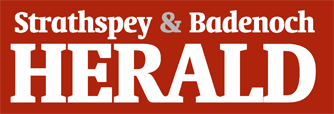Is airport expansion on a wing and a prayer?
Next year will be the ?80th anniversary of the setting up of Sir Alan Cobham’s Flying Circus, aviation displays that were a heady mix of barnstorming and joyriding, which gave many Invernessians their first close up of an aeroplane.
Those days were well before the advent of the health and safety era and he simply invited locals into his plane for a short flight, including looping the loop. Those who took up his invitation may have become the town’s first air passengers. If anyone was, say, ?in their early 20s, their sons and daughters could still be alive.
This September is the 120th anniversary of the birth of Captain Ernest ‘Ted’ Fresson, the ?best-known aviation pioneer ?in Highland terms, the 20th anniversary of the Fresson Trust and the unveiling of his statue ? at Inverness Airport.
Cobham’s fliers, parachutists and wing walkers soared in to the Inverness skies from the Longman field in 1932 as part of his tour to bring the message of air travel and airfields to towns throughout the UK. One hazardous party piece saw a plane fly so low that a ?wing-walker could pick up a handkerchief from the ground.
That’s unlikely to happen these days. Most people use tissues.
Fresson designed and built planes in China then came back ?to Britain in 1927 to make his living by offering joy rides from improvised airfields up and down the country. In Inverness, I think he used a field at Dalneigh before settling on the Longman.
His Highland Airways took off from Longman airfield in 1933, heading for Orkney in the first scheduled flight in North history. He went on to open the first airports in Wick, Kirkwall, Stornoway, Sumburgh and Aberdeen and as World War II approached it was Fresson who advised the Air Ministry on where to set up new military airfields, including at Dalcross.
And next year will see the 65th anniversary of the airfield at Longman being declared too small for commercial aircraft, with all operations being moved to Dalcross, now renamed Inverness Airport. Who could have envisaged in 1947 that one day an Inverness-Germany service would be successfully launched?
The German service began in 2008, attracting 6000 passengers ?in year one and a whopping 20,000 in year two.
Brimming steins are being raised to its success with significant expansion planned.
Meanwhile, the Belfast and Bristol services continue to be a great success.
But therein lies the rub. ?Financial stringency by the Scottish Government has meant that Highlands and Islands Airports Ltd, the operators of Inverness and the area’s necklace of airports, no longer has a route development fund to entice new services.
Our Bristol and Belfast routes were secured by pump-priming ?in this way. This can be done by granting airlines reduced landing fees for the first couple of years until the passenger traffic builds up, plus money with which to market the flights if they come ?to Inverness.
That’s what the competition does and what Inverness has done successfully, but that fund is now emptier than that famous promise to abolish tuition fees.
It has already been signalled that the Inverness-Amsterdam route may be poised to reopen after a ?10-year gap. That could happen this summer but it would be due to a unique multi-agency approach, with various partners summoning up “Dutch courage” as it were.
We need to keep the momentum of such an approach, enabling something significant to be achieved which was beyond the purse of the airport company alone.
But without a route development fund, how is Inverness to fight its corner at a time when cash-strapped airlines look for enticements to start up anywhere new? By offering discounted fees plus marketing assistance, an airport is displaying the kind of “open for business” and can-do approach which attracts airlines.
Inverness’s road and rail links are not of the quality a vibrant city and region requires.
The A96 to the oil capital of Europe is a joke, the A9 has major issues, while there are not enough fast daily trains to the south cities. Business and commerce thus depends a great deal on the airport.
Business and tourism — and, yes, politicians — need to make enough noise to get the route development fund back into operation. It is a vital signal of eagerness, of willingness to connect with the wider world.
On 6th May, either Alex Salmond or Iain Gray, the former dux of Inverness Royal Academy, will become First Minister. We need to have a strong message ?in their inbox that the Highlands needs to strengthen its connections to secure its future, and that means winging in investment to make the route development fund spring from dormant to dynamic.
Yes, life is tough and money is short. But we are talking strategic development here, and about enhancing the transport communication between the Highlands to stimulate the economic growth everyone agrees we need. There are airlines out there looking to launch services. Let’s not leave ourselves grounded and allow the spirits of Fresson and Cobham to despair...

